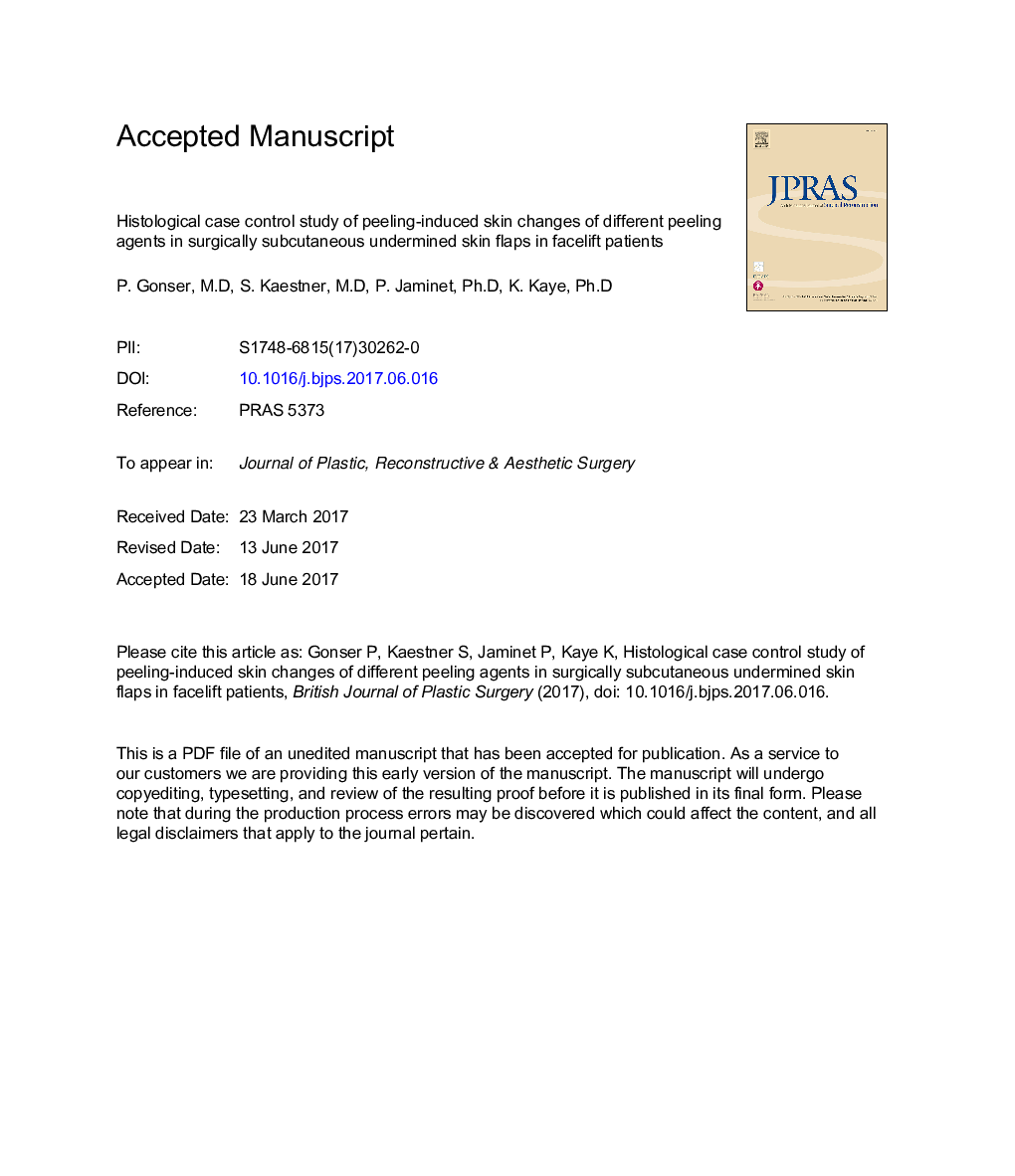| Article ID | Journal | Published Year | Pages | File Type |
|---|---|---|---|---|
| 5715062 | Journal of Plastic, Reconstructive & Aesthetic Surgery | 2017 | 22 Pages |
Abstract
A histological evaluation of peeling-induced skin changes in subcutaneous undermined preauricular facial skin flaps of nine patients was performed. There were three treatment groups: Trichloroacetic acid (TCA) 25%, TCA 40% and phenol/croton oil; one group served as control. Two independent evaluators determined the epidermal and dermal thickness and the depth of necrosis (micrometre). The percentual tissue damage due to the peeling was calculated, and a one-sample t-test for statistical significance was performed. On the basis of the histomorphological changes, peeling depth was classified as superficial, superficial-partial, deep-partial and full thickness chemical burn. The histological results revealed a progression of wound depth for different peeling agents without full thickness necrosis. TCA peels of up to 40% can be safely applied on subcutaneous undermined facial skin flaps without impairing the vascular patency, producing a predictable chemical burn, whereas deep peels such as phenol/croton oil peels should not be applied on subcutaneous undermined skin so as to not produce skin slough or necrosis by impairing vascular patency.
Related Topics
Health Sciences
Medicine and Dentistry
Otorhinolaryngology and Facial Plastic Surgery
Authors
P. Gonser, S. Kaestner, P. Jaminet, K. Kaye,
